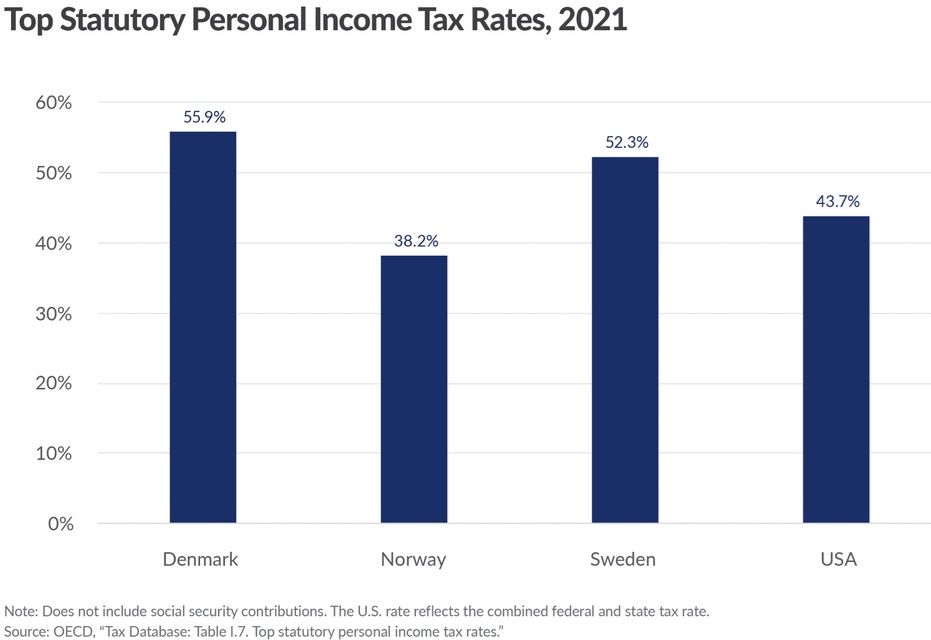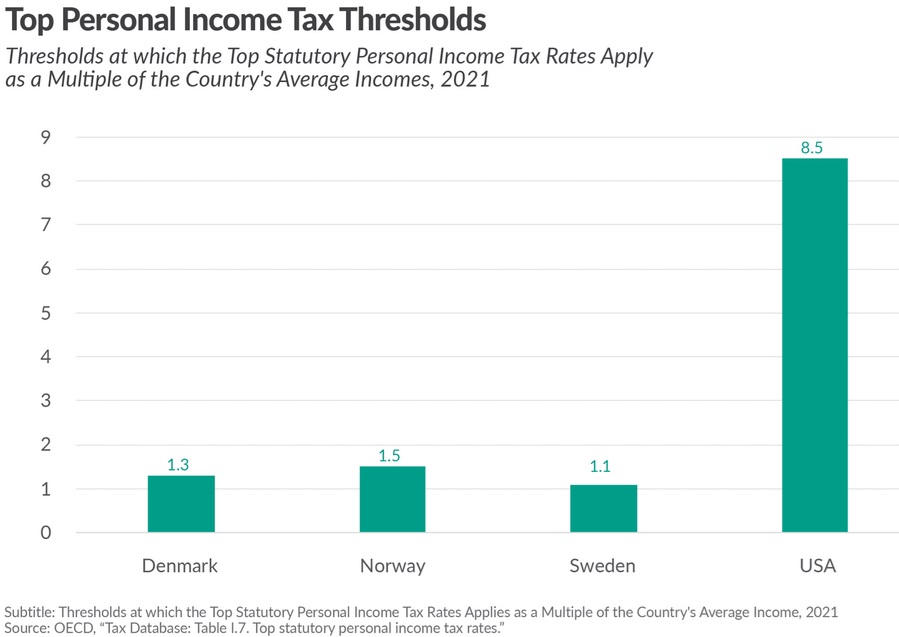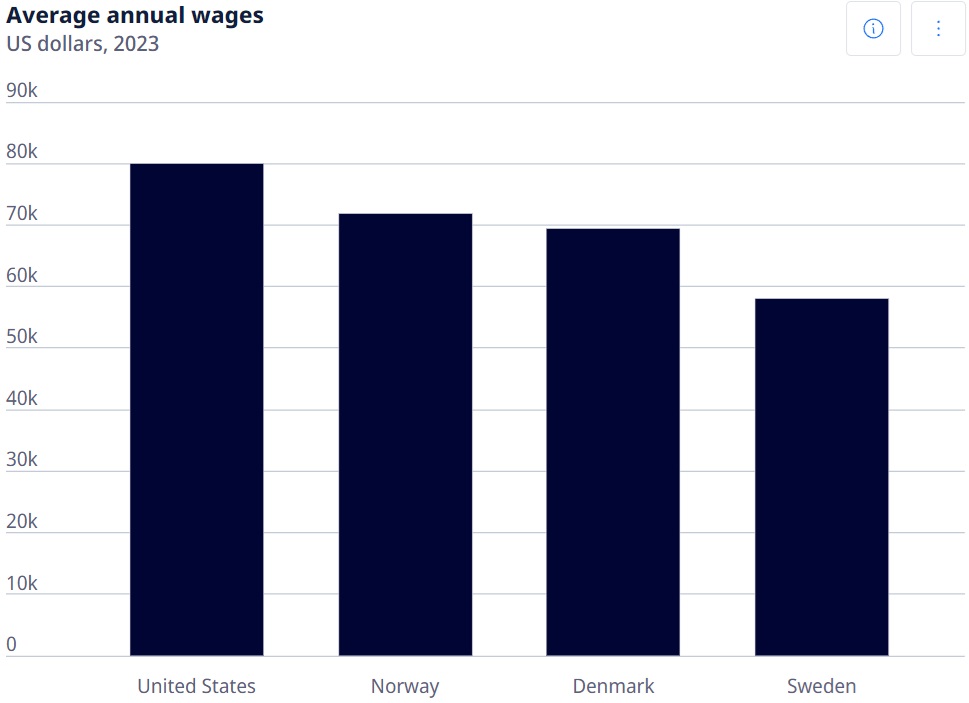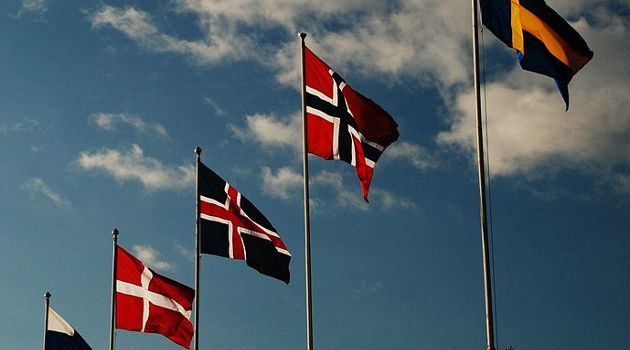Scandinavian nations are not socialist, at least if we’re using the technical definition (government ownership, central planning, and price controls).
But those countries do have big welfare states. And that means stifling tax burdens.
And those harsh taxes don’t just apply to rich taxpayers. Lower-income and middle-class people also get pillaged.
I’ve already explained that punitive value-added taxes are a major burden for ordinary people in Europe, and residents of Scandinavian nations get hit especially hard.
Today, let’s look at how they also get hit hard by taxes on income.
We’ll start by looking at a report from the Tax Foundation, which includes this chart showing top tax rates in Denmark, Norway, Sweden, and the United States.
As you can see, the United States has an advantage over Denmark and Sweden, while oil-rich Norway actually has a lower top tax rate.

Overall, a modest win for the United States.
Now let’s look at a different chart from the Tax Foundation’s report. As you can see, there’s a huge advantage for America when we compared the income levels where top tax rates take effect.
In the United States, you have to earn a lot of income to be hit by the top rate, but people with incomes only slightly above the average pay top tax rates in Denmark, Norway, and Sweden.

Here are some excerpts from the report.
…tax rates are not necessarily the most revealing feature of Scandinavian income tax systems. …Scandinavian countries tend to levy top personal income tax rates on (upper) middle-class earners, not just high-income taxpayers. For example, Denmark’s top statutory personal income tax rate of 55.9 percent applies to all income over 1.3 times the average income. From a U.S. perspective, this means that all income over $82,000 (1.3 times the average U.S. income of about $63,000) would be taxed at 55.9 percent. …Norway’s top personal tax rate of 38.2 percent applies to all income over 1.5 times the average Norwegian income. Sweden’s top personal tax rate of 52.3 percent applies to all income over 1.1 times the average national income. In comparison, the United States levies its top personal income tax rate of 43.7 percent (federal and state combined) at 8.5 times the average U.S. income (at around $530,000). Thus, a comparatively smaller share of taxpayers faces the top rate.
I could end the column at this point and unambiguously state that the American tax system is better (or, to be more accurate, less worse).
But there’s another chart that’s worth considering.
Here’s OECD data on Average annual wages. As you can see, the United States has a non-trivial advantage over the three Scandinavian nations featured in the Tax Foundation’s report.

This means that if Scandinavian tax rates were imposed on equivalent income levels in America, the top tax rates would hit people making average incomes.
One final point. Norway and Sweden also pillage their ordinary citizens with onerous social insurance taxes (akin to FICA payroll taxes in the United States.
Both Norway and Sweden levy high social security contributions, raising revenue amounting to approximately 9 percent of GDP in 2021. In the United States, social security contributions (payroll taxes) raise revenue of about 6 percent of GDP. In Norway and Sweden, social security contributions—employer and employee side combined—account for 18.8 percent and 29.2 percent of the total labor costs of a single worker with no children earning an average wage, respectively. This compares to 14.6 percent in the U.S. Only Denmark does not impose social security contributions to fund its social programs. Instead, it uses a share of its individual income tax revenue for these programs.
The bottom line is that a big welfare state means big taxes on ordinary people.
As I’ve noted before, it is impossible to finance big government by taxing the rich. Simply stated, there aren’t enough of them (and they also have the ability to avoid punitive tax policies).
So anyone (like the incoming president) who opposes entitlement reform implicitly is in favor of giant tax increases on lower-income and middle-class households.
———
Image credit: Flöschen | CC BY-SA 3.0.


